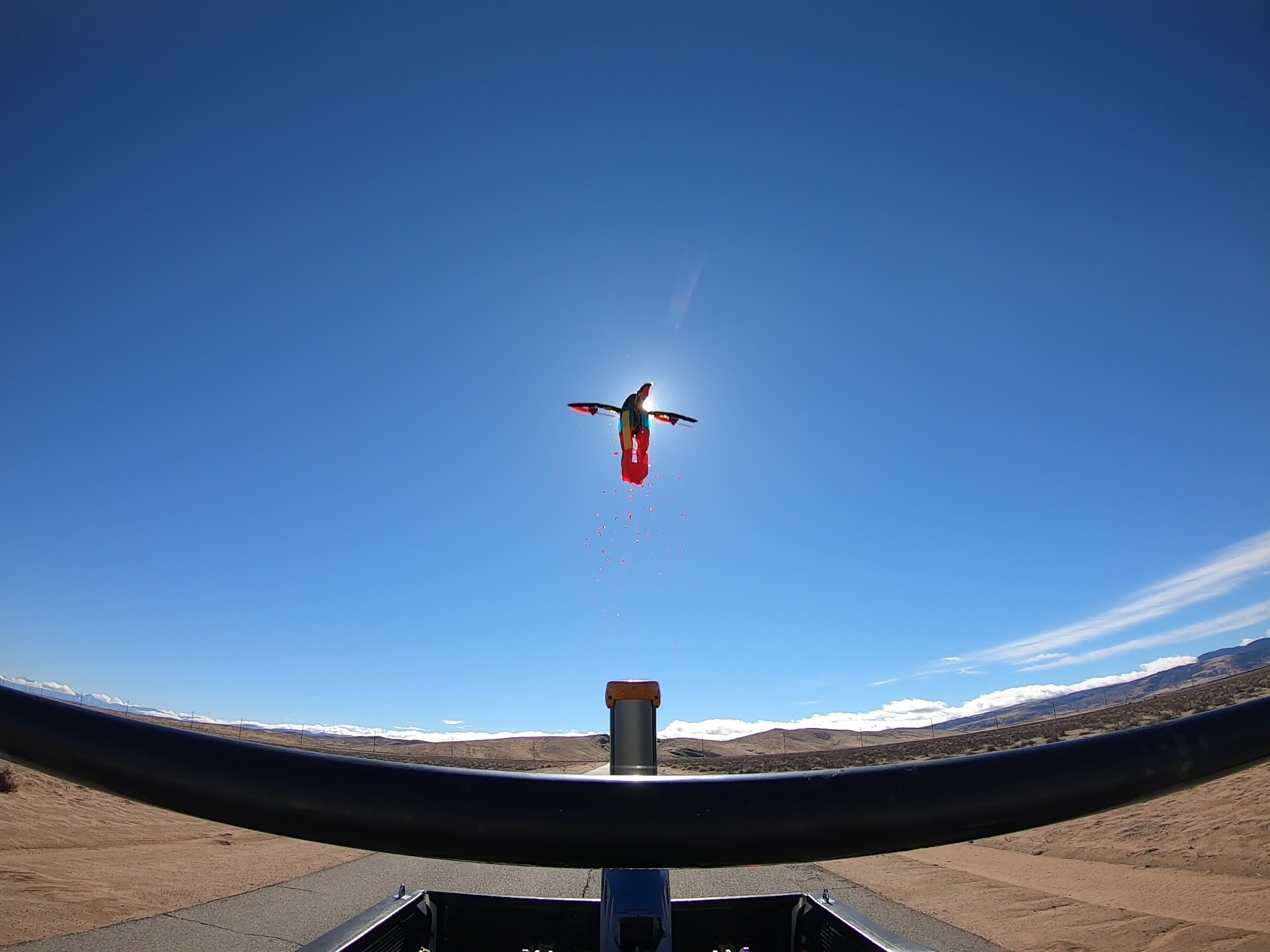SQUID
Design of a Ballistically-Launched Foldable Multirotor
The operation of multirotors in crowded environments requires a highly reliable takeoff method, as failures during takeoff can damage more valuable assets nearby. The addition of a ballistic launch system imposes a deterministic path for the multirotor to prevent collisions with its environment, as well as increases the multirotor’s range of operation and allows deployment from an unsteady platform. In addition, outfitting planetary rovers or entry vehicles with such deployable multirotors has the potential to greatly extend the data collection capabilities of a mission. A proof-of-concept multirotor aircraft has been developed, capable of transitioning from a ballistic launch configuration to a fully controllable flight configuration in midair after launch. The transition is accomplished via passive unfolding of the multirotor arms, triggered by a nichrome burn wire release mechanism. The design is 3D printable, launches from a three-inch diameter barrel, and has sufficient thrust to carry a significant payload. The system has been fabricated and field tested from a moving vehicle up to 50mph to successfully demonstrate the feasibility of the concept and experimentally validate the design’s aerodynamic stability and deployment reliability.
Press coverage
94 sites in 20 languages, including
Reference
Pastor, D., Izraelevitz, J., Nadan, P., Bouman, A., Burdick, J., & Kennedy, B. (2019). Design of a Ballistically-Launched Foldable Multirotor. In IEEE/RSJ International Conference on Intelligent Robots and Systems (IROS).


Autonomous Stabilization
This second part of the project focused on the Autonomous Stabilization after the ballistic launch.
Reference:
Bouman, A., Nadan, P., Anderson, M., Pastor, D., Izraelevitz, J., Burdick, J., & Kennedy, B. (2019). Design and Autonomous Stabilization of a Ballistically Launched Multirotor. Proc. International Conference of Robotics and Autonomy.



